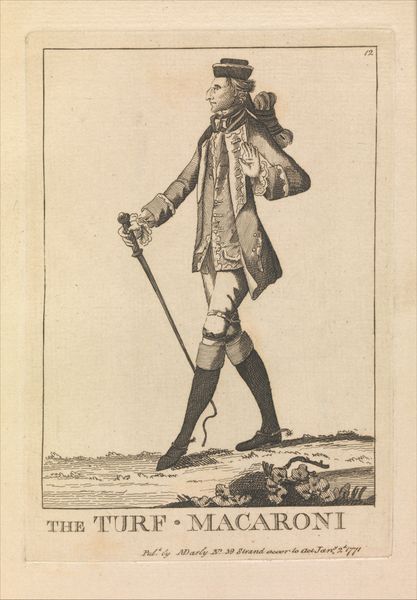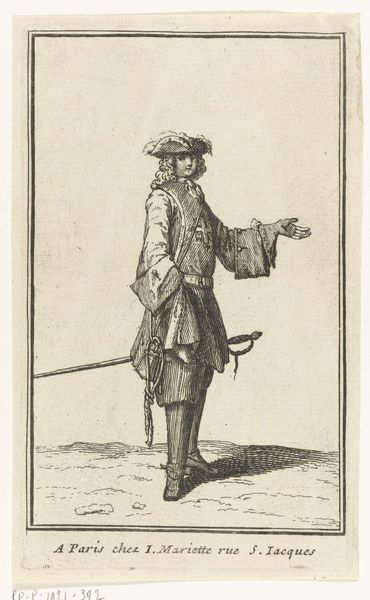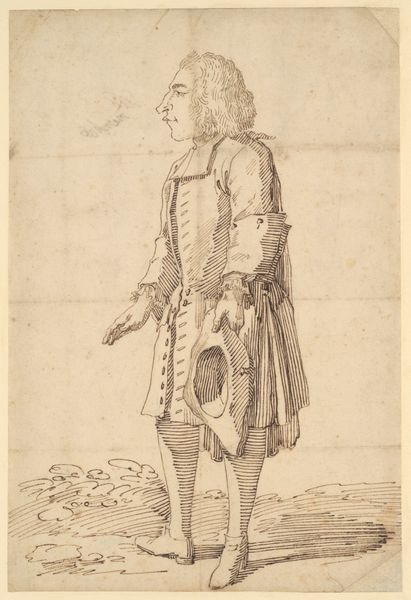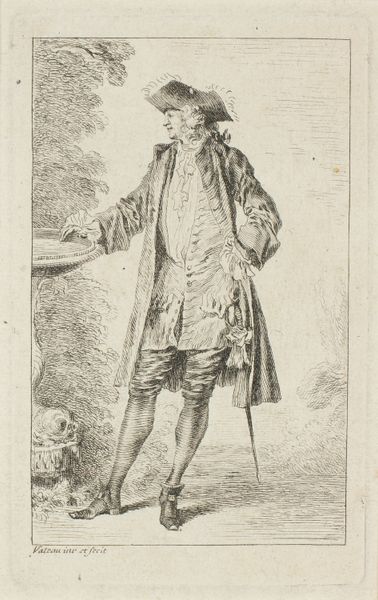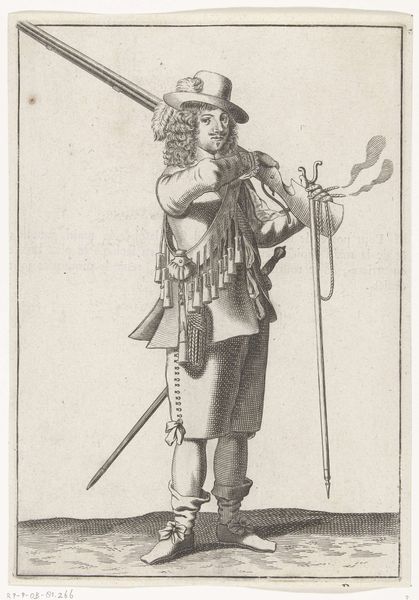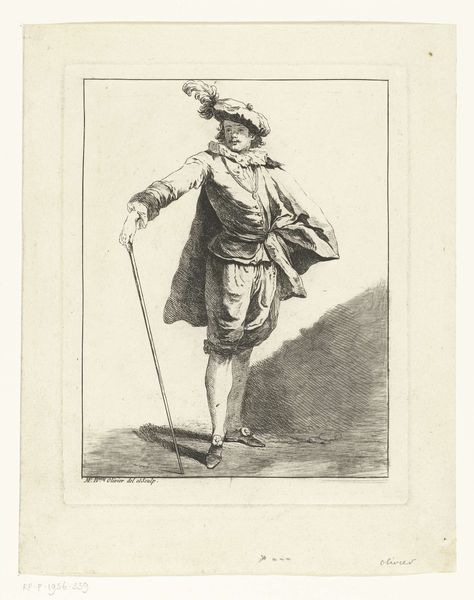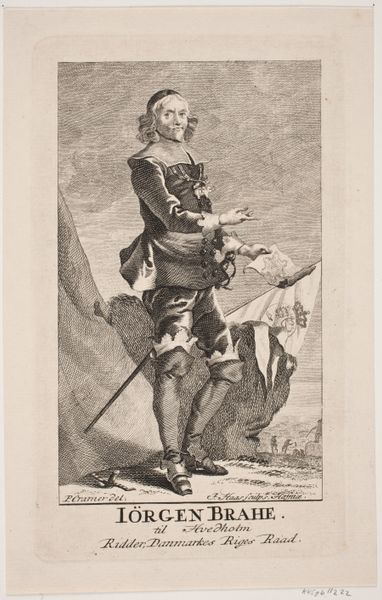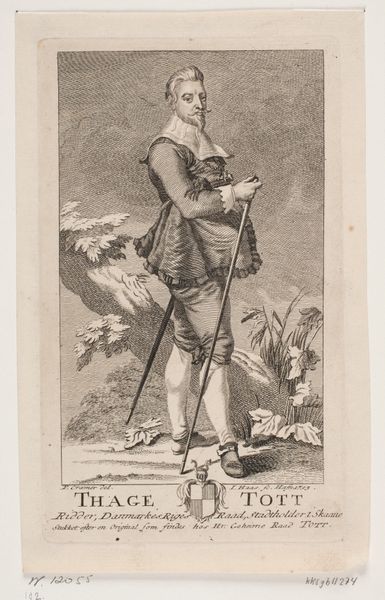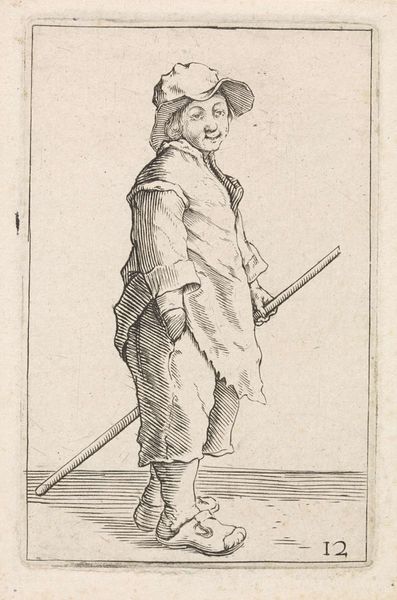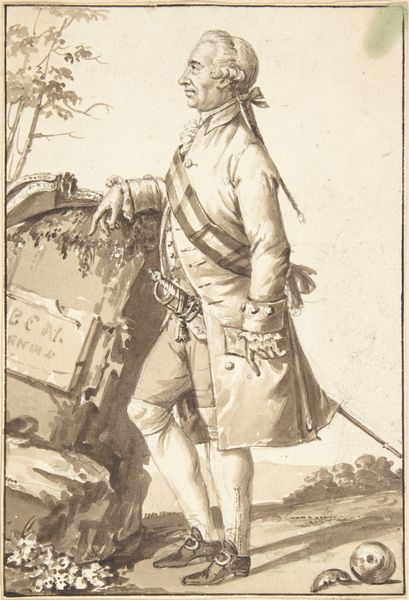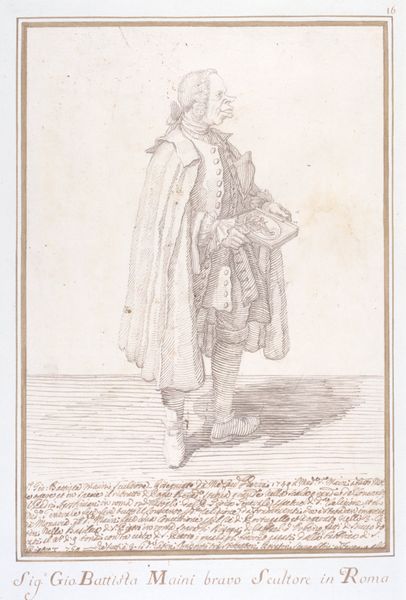
Dimensions: 8 3/16 × 6 13/16 in. (20.8 × 17.3 cm) (image)9 13/16 × 7 11/16 in. (24.92 × 19.53 cm) (sheet)11 7/8 × 9 5/8 in. (30.16 × 24.45 cm) (mount)
Copyright: Public Domain
Curator: Here we have a fascinating print, “Portrait of J. D. De Heem,” attributed to Henry Courtney Selous and created around the 19th century. It’s part of the Minneapolis Institute of Art's collection. Editor: My initial impression is that this is a piece really celebrating the process of engraving itself. The line work is so precise, creating texture and volume using a seemingly limited technique. Curator: Absolutely. As a history painting and portrait, it speaks to the values of academic art and perhaps a longing for a connection with history. Prints like this were also widely disseminated, making art accessible to wider audiences in society. Editor: I wonder, looking at the details of his garments, about the type of metal and the tools Selous used to achieve the precise cut on the plate. And how that metal itself—likely copper or steel— influenced the image's final look and reproducibility. Curator: It is interesting to note that such prints functioned within very specific social spheres, shaping public perception and historical understanding. Academic art was about establishing a visual and cultural lineage for particular social groups. Editor: True, but consider the labor. Engraving was intensive manual work, quite different from the often idealized vision of art production during the baroque or academic eras that the print revives. It almost underscores a tension between production and representation, class, and historical context. Curator: Yes, these visual products served as political tools of identity creation. In this case, one that revived an interest in earlier artistic styles. It made baroque aesthetics, the period's power displays, more attainable. Editor: And for the public today, that accessibility offers us a way of engaging with and demystifying art production. What does it mean for us to value both the virtuosity involved, and to unpack the role labor plays in the creation of meaning? Curator: Understanding such images requires looking at the broader political environment. It's essential to think about how visual imagery contributed to cultural and national narratives. Editor: Indeed. For me, thinking through the process of the print's production and distribution encourages us to also think about class and labor. These combined lenses give us a fuller picture.
Comments
No comments
Be the first to comment and join the conversation on the ultimate creative platform.
